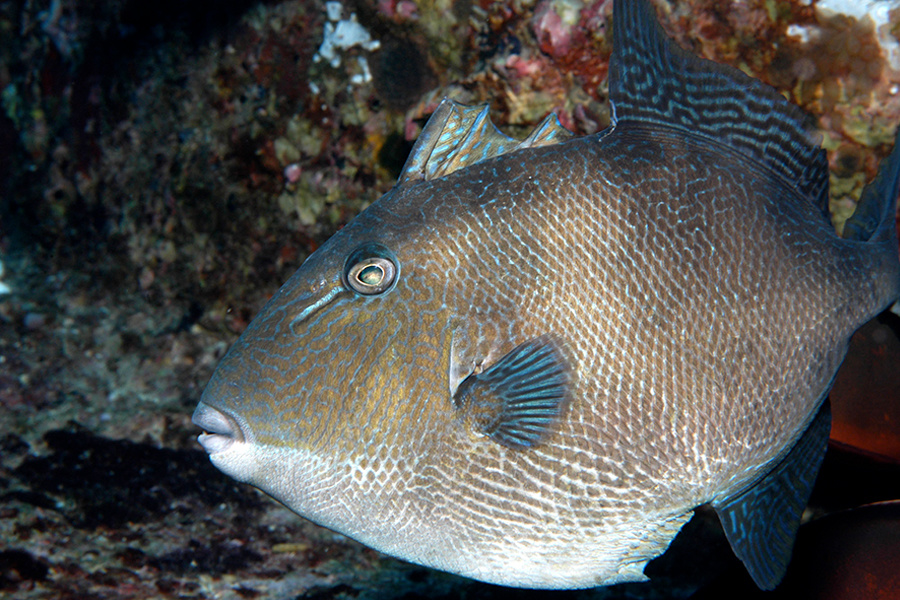Do Gray Triggerfish Survive After Catch-and-Release?

New science shows they usually don’t.
Last week at its quarterly business meeting, the N.C. Marine Fisheries Commission received information on how the effectiveness of circle hooks compares with barbless treble hooks for recreational anglers on North Carolina coastal waters. The regulatory body is considering potential recreational hook-and-line rules modifications to reduce the mortality of released fish.
Research Need
Catch-and-release is a conservation practice to prevent overharvest of fish stocks. Regulations — as well as anglers voluntarily releasing fish — have led to higher rates of discards in many regions.
But if the fish dies anyway, of course, this fisheries management strategy isn’t really working.
What did they study?
One of the species for which regulations have recently changed in the southeast United States is gray triggerfish. Recreationally discarded fish now number two to three times the amount of harvested fish of this species. Several studies have estimated survival for this species after release, but none have had a control group with which to compare results.
In this study in Onslow and Raleigh bays, North Carolina, scientists caught fish using conventional reels at common depths for gray triggerfish and also estimated survival rates for a control group of the species using SCUBA diver-tagged fish from bottom traps.
What did they find?
Researchers found that anglers recaptured just 29% of the fish the scientists had tagged and released at the surface. The majority of recaptures (80%) occurred at the original sites where the fish were tagged.
Using a model-simulated population of 10 million fish, the team estimated the catch-and-release survival rate for North Carolina’s recreational hook-and-line fishery at 35% for triggerfish.
Anything else?
The research team performed necropsies on 68 gray triggerfish. Overall, 31% of these fish had experienced neither external nor severe internal injury after hook-and-line catch and release, which is extremely close to the team’s survival estimate.
Reading
Runde, B.J, Paul J. Rudershausen, P.J., Sauls, B. Mikles, C.S., and J.A. Buckel. 2019. Low discard survival of gray triggerfish in the southeastern US hook-and-line fishery in Fisheries Research, Vol. 219.
NOAA’s Cooperative Research Program (Grant No. NA14NMF4540061) and the Big Rock Blue Marlin Tournament made this research possible. The North Carolina Chapter of the American Fisheries Society and the Coastal Conservation Association of North Carolina provided additional scholarship support for B. Runde.
Summary compiled by Sara Mirabilio
Above photo courtesy of NOAA.
The text from Hook, Line & Science is available to reprint and republish, but only in its entirety and with this attribution: Hook, Line & Science, courtesy of Scott Baker and Sara Mirabilio, North Carolina Sea Grant. HookLineScience.com
- Categories:



